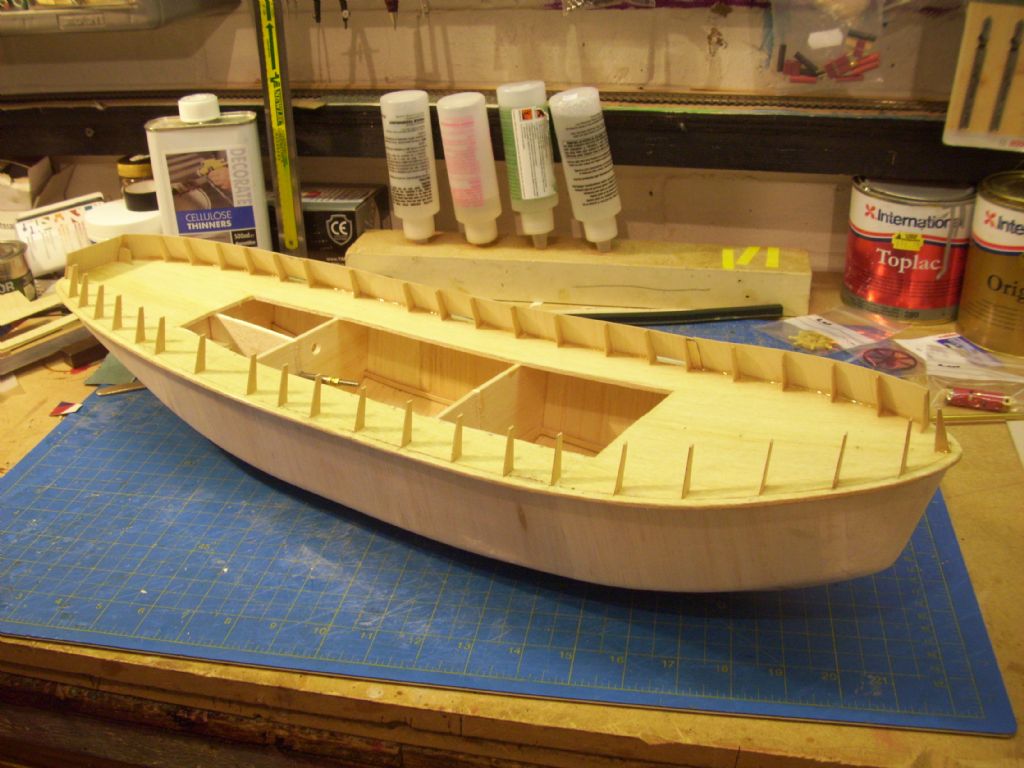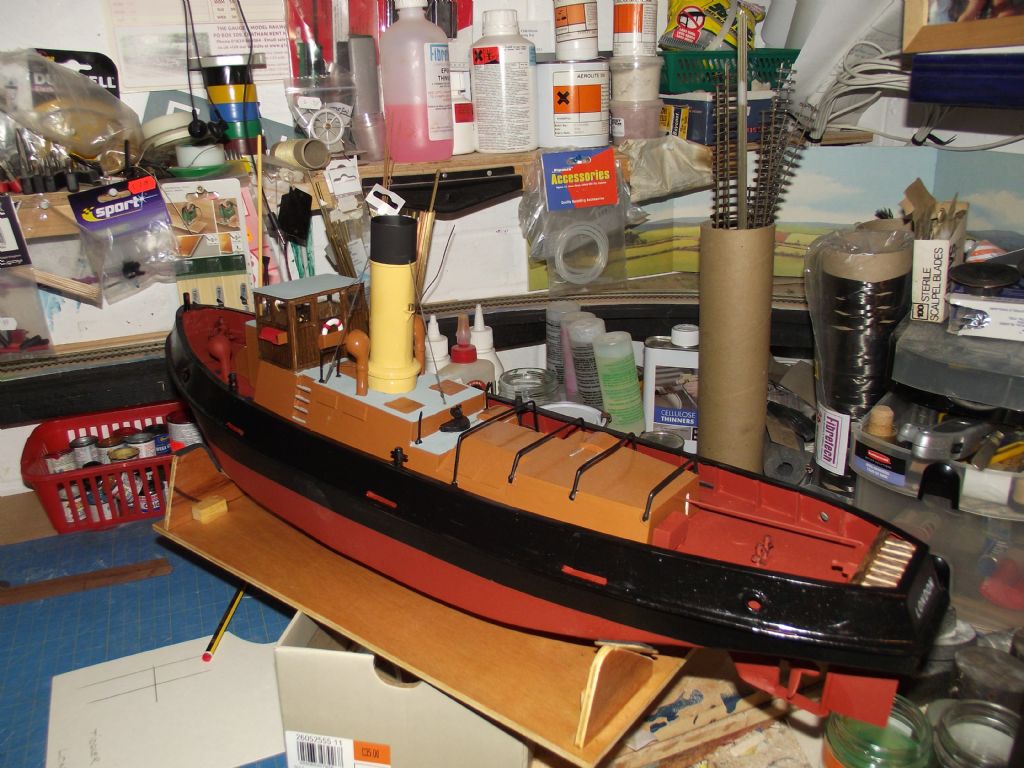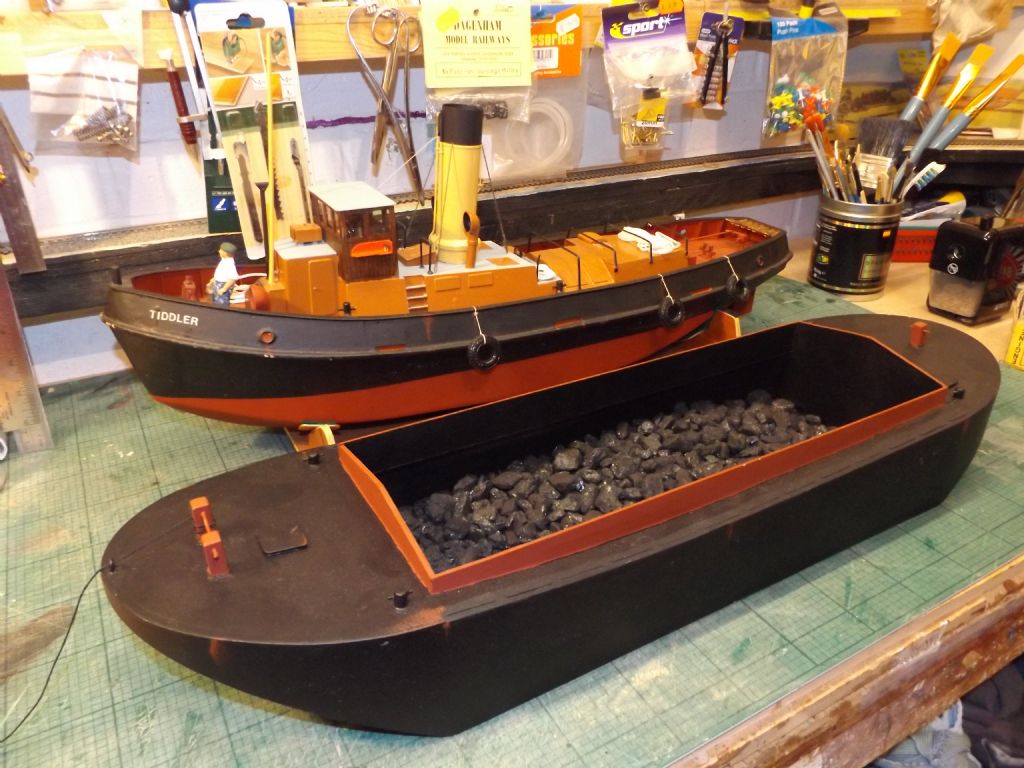I hope someone can offer some advice here with a problem I am having with a balsa hull and tissue paper covering.
I am attempting Vic Smeed's Tiddler tug at the Model Boats plan size of 20" or so, and I am using the suggested balsa hull construction, at least as far as the deck. I have what is a satisfactory hull complete albeit with a few areas filled with the green putty stuff. I then attempted to cover the hull using aircraft tissue paper but have run into problems. This is my first attempt with this method and clearly the practice pieces I tried were not representative of what happened when I moved on to the hull.
I sealed the balsa with several coats of 50-50 thinned non-shrinking cellulose dope, rubbed down between coats. I then applied an over-size sheet of tissue paper to the main side chine from the deck down, with an overlap of 1/4" to the next chine, snipped along the edges to fold over the curves. This was applied with more thinned dope. I did the same for the bottom sheet, overlapping to the middle chine again. The problem has been when I added the middle chine and added, in effect, an overlap to the overlaps. Specifically, the overlaps tended not to stick and I ended up with a lot of very uneven, bubbling and/or loose edges. Sanding did not really help and, rather than slap filler everywhere and cover it all up, I have spent some time removing the tissue paper (with thinners AND paint stripper – it was stuck down well in places).
What went wrong? I have seen somewhere the idea that one uses thinned sanding sealer rather than dope, and that the tissue is smoothed immediately with rolled kitchen towel to flatten the covering and to remove excess sanding sealer. I had thought also that if I followed the same procedure as above for the first two chines, I should then add an under-size piece of tissue paper to the last chine so that it only lays on the overlaps, rather than creating further layers over the hard chine edges.
Any thoughts or suggestions gratefully received.
Nick








